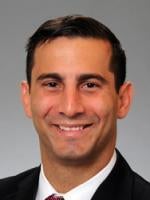On the evening of March 30, 2020, the Centers for Medicare and Medicaid Services (CMS) issued an interim final rule (IFC) introducing a new crop of temporary regulatory waivers and new rules to equip the American health care system with maximum flexibility in responding to the Coronavirus (COVID-19) declared public health emergency (PHE) and overall pandemic. These changes come at the heels of other recent telehealth waivers previously issued by CMS in response to COVID-19 that allowed patients to receive telehealth at home. CMS supported the expanded use of telehealth and telecommunications in the rule stating:
“By increasing access to services delivered using telecommunications technology, increasing access to testing in a patient’s home, and improving infection control, this IFC will provide the necessary flexibility for Medicare beneficiaries to be able to receive medically necessary services without jeopardizing their health or the health of those who are providing those services, while minimizing the overall risk to public health.”
This article discusses the key takeaways from the IFC regarding telehealth services, explains insights on what it will (and will not) accomplish, and describes how the public can submit comments to CMS during the next sixty days. Health care providers, hospitals, and companies offering telemedicine services should review these rules to best deploy their services during the public health emergency.
New Telehealth Codes
In response to the COVID-19 pandemic, on March 6, 2020, Medicare began paying for telehealth services, including office, hospital, and other visits furnished by physicians and other practitioners, to patients located anywhere in the country, including in a patient’s home. Building on that recent expansion of telehealth coverage, this IFC introduces 80 additional services, which may be furnished via telehealth during the PHE. A complete list of all Medicare telehealth services can be found here.
Additionally, not only has CMS significantly expanded the types of services that can be furnished via telehealth, but Medicare will also pay for these telehealth services at the same rate they would have been paid if furnished in person.
“In-Person” Place of Service (POS) and New Telehealth Modifier 95
Prior to the COVID-19 pandemic, telehealth distant site providers did not report a modifier with their professional codes and instead included “POS 02” to indicate the service was furnished via telehealth and in compliance with the Medicare telehealth coverage requirements (this POS code replaced the use of the GT modifier in 2018). Services with a “POS 02” are paid to the provider at the lower facility rate (with the idea being that certain costs are borne by the facility and are not a cost to the provider). Now, during the PHE, Medicare is willing to preserve the higher, non-facility rate paid to providers who would have seen a patient in-person but for the PHE. As such, CMS is directing providers furnishing telehealth to report the same POS the provider would have included if the service was rendered in person and to include modifier 95 to indicate the service was rendered via telehealth. This policy remains in place only during the PHE. Note that providers may also still choose to utilize “POS 02,” which will dictate that services be paid at the facility rate.
Limitations on the Frequency of Telehealth Waived
- Hospital, Critical Care, and SNF Telehealth Frequency Limits lifted. Prior to the COVID-19 pandemic, hospitals were limited to providing (and billing for) subsequent hospital care once per three-day period, critical care consults could only be billed once per day, and subsequent skilled nursing facility (SNF) services could only be billed once per 30-day period. During the PHE these telehealth frequency limitations all have been waived.
- ESRD Vascular Access Examination permitted via Telehealth. During the PHE, the clinical examination of an end-stage renal disease (ESRD) beneficiary’s vascular access site may be furnished via telehealth rather than in-person. Further, as discussed in our prior article summarizing telehealth provisions in the CARES Act, the monthly ESRD-related clinical assessments may be conducted via telehealth rather than in-person.
Waivers of Cost Sharing Allowed Beyond Telehealth
The Office of Inspector General’s (OIG) prior policy statement in response to the COVID-19 pandemic notified physicians and other practitioners that they will not be subject to sanctions for reducing or waiving any cost-sharing obligations beneficiaries may owe for telehealth during the PHE. The IFC clarifies the OIG policy is not limited to telehealth and applies to a much broader array of remote services, including: “a broad category of non-face-to-face services furnished through various modalities, including telehealth visits, virtual check-in services, e-visits, monthly remote care management, and monthly remote patient monitoring.” The IFC further specifies that the OIG policy applies not only to physicians and practitioners, but also to hospitals or other eligible individuals and entities billing on behalf of the practitioner via reassignment.
Communication Technology Based Services
While broader categories of communication technology based services (CTBS) have been authorized in the last few years, their availability has been limited by various factors, including requirements related to prior treatment relationships, etc. However, both the IFC and other waivers issued by CMS have significantly broadened access and reimbursement for these services. Specifically, for the duration of PHE, existing CTBS services are being expanded in the following ways:
- CTBS can now be provided to both new and established patients despite the code descriptors suggesting otherwise.
- Generally, CTBS services require beneficiary consent in advance of the service being provided. However, the IFC clarifies that consent for CTBS: (1) only needs to be obtained annually; (2) may be documented by auxiliary staff under general supervision or by the billing practitioner; and (3) is not required in advance of the visit.
- A broader group of practitioners, including licensed clinical social workers, clinical psychologists, physical therapists, occupational therapists, and speech language pathologists, can bill using virtual check-in and remote evaluations codes previously limited to only practitioners who can bill evaluation and management (E/M) codes. CMS acknowledges this is not an exhaustive list and is seeking comments from industry stakeholders for input on other kinds of practitioners who might furnish these kind of services in the context of the PHE.
- For private practice physical and occupational therapists and speech-language pathologists, HCPCS codes G2010, G2012, G2061, G2062, and G2063 are designated as CTBS “sometimes therapy” services requiring the GO, GP, or GN modifier.
Note, certain CTBS services that originate from an E/M visit in the last 7 days or result in an E/M visit within 24 hours will still continue to be bundled into the in-person E/M visit and not be separately billable.
Telehealth Can Be Used to Satisfy Direct Supervision Requirements
For the duration of the PHE, CMS is allowing direct supervision to be provided using real-time interactive audio and video technology.
Traditionally, direct supervision requires a physician to be present in the office suite and immediately available to furnish assistance and direction to supervised clinical staff. However, in the IFC, CMS recognizes the use of real-time, audio and video telecommunications technology gives the physician the ability to observe the patient interacting with, or responding to, the in-person clinical staff through virtual means, and thus, such physician’s availability to furnish assistance and direction could be met without requiring the physician’s physical presence in that location. Thus, for services requiring direct supervision supervision may now be provided virtually using real-time audio/video technology. However, CMS also notes in many cases furnishing services without the in-person presence of the physician may not be appropriate and directs physicians to exercise their best judgement in determining when supervision is and is not appropriate via technology. CMS is seeking comments from industry stakeholders as to whether there should be any guardrails and what kind of risk might this policy introduce for patients while reducing risk of COVID-19 spread.
Expanded Use of Telehealth in the Home Health, Hospice and IRF Settings
- Home Health Agencies may utilize remote patient monitoring, telehealth or other telecommunications technologies in the course of providing home health services, provided use of such technology or telehealth is provided for in the plan of care. Note, the use of technology cannot substitute for the required in-person visit for home health patients. CMS also is allowing home health agencies to report the costs of technology during the PHE as allowable administrative and general costs.
- Hospices may provide services via a telecommunications system (including RPM) if it is feasible and appropriate to do so for purposes related to palliative and management of the beneficiary’s terminal illness. However, the use of telecommunications must not jeopardize the patient’s health or the health of the patient’s service providers during the PHE. The use of such technology must be included on the plan of care. Additionally, the face-to-face visit provided solely for the purpose of hospice care certification may be provided via telehealth through use of interactive audio and video communications during the PHE.
- Inpatient Rehabilitation Facility Face to Face Visits via Telehealth. Physicians must conduct face-to-face visits with patient at least three days per week to assess the patient’s course of treatment and progress. During the PHE such face-to-face visits may be conducted via telehealth.
CMS is soliciting feedback on these interim changes.
Rural Health Clinics and Federally Qualified Health Centers
To minimize risks associated with COVID-19, and to provide the best care possible during the PHE for rural and otherwise underserved areas, beginning March 1, 2020 and for the duration of the PHE, CMS authorized expanded availability for rural health clinics (RHC) and federally qualified health centers (FQHC) to perform, and be paid for, services provided through interactive communication technology where such services otherwise would have been required to be provided in person. Traditionally, with limited recent exceptions for certain virtual care services billed as G0071 for existing patients, RHCs and FQHCs could only bill and be paid for patient visits provided by a limited list of practitioners when they were provided face-to-face at the RHC/FQHC by an RHC/FQHC practitioner. However, with the change under the IFC, the limited services that could be rendered and the associated reimbursement under G0071 will be expanded for the duration of the emergency to also include digital evaluation and management services under CPT Codes 99421-99423. In connection with these changes the IFC makes clear that: (1) the face-to-face requirement for RHCs/FQHCs is waived; (2) to make virtual care services available to all beneficiaries that would not have access to clinically appropriate in-person treatment, the requirement that a patient have prior treatment within the last year is waived; and (3) to prevent interference with the timely provision of needed virtual communication and care management services, requirements to obtain consent prior to these services being rendered is waived, and instead consent can be obtained at the time of service, including through staff under the general supervision of the RHC/FQHC practitioner.
Teaching Physician Direct Supervision of Resident Telehealth via Interactive Technology
For the duration of the PHE, Medicare will make payments under the physician fee schedule for teaching physician services when the supervised resident furnishes telehealth services to beneficiaries under the teaching physician’s direct supervision provided via interactive audio-visual technology. This allowance for direct supervision via interactive audio-visual technology, discussed above, extends to teaching physician services billed under the primary care exception and allows for the requirement that the teaching physician be physical present during key portions of the service to be satisfied via interactive communication technology. CMS is seeking comments on whether direct supervision by interactive telecommunications technology is appropriate in the context of this PHE, as well as whether any guardrails should be included.
Clarification for Remote Patient Monitoring
The new rule provides clarification and changes for remote patient monitoring (RPM). CMS states that “RPM services support the CDC’s goal of reducing human exposure to the novel coronavirus while also increasing access to care and improving patient outcomes.” Consequently, the rule clarifies that RPM services can be furnished to both new patients and established patients, and that these RPM services can be provided for both acute and chronic conditions and for patients with only one disease.
Additionally, the rule provides that during the COVID-19 PHE the patient’s consent to receive RPM services need only be obtained once annually (including at the time services are furnished). When obtaining this required consent, CMS recommends (for both new and established patients) that the physician or other health care practitioner review the consent information with the patient, obtain the patient’s verbal consent, and document in the medical record that consent was obtained.
Telephone Evaluation and Management Services
Pursuant to the IFC, for the duration of the PHE, subject to state law prohibitions, practitioners can now also receive reimbursement in connection with evaluating beneficiaries through audio-only devices as opposed to being limited to billing for services using devices with real-time audio and video capabilities. These services would also be billable if they involve a caretaker as opposed to a beneficiary. Prior to the IFC, services with CPT code descriptors indicating audio-only or services to parties other than the beneficiary, had been categorically assigned the non-covered service indicator. However, CMS believes this is an antiquated policy in light of the similarities between these codes and other CTBS codes. With the IFC, CMS authorized, for the duration of the PHE, coverage for telephone assessments (CPT codes 98966-98968 and 99441-99443), including those that provide reimbursement when the practitioner spends more than a brief amount of time in communication with a patient. Such coverage extends to both new and established patients. These telephone assessments may be provided by, among others, licensed clinical social workers, clinical psychologists, physical therapists, occupational therapists, and speech language pathologists when the visit pertains to services with those practitioner’s benefit categories. For private practice physical and occupational therapists and speech-language pathologists, these CPT codes are designated as CTBS “sometimes therapy” services requiring the GO, GP, or GN modifiers.
Increased Flexibility for Selecting Level of Evaluation & Management (E/M)
Pursuant to the telehealth waivers issued earlier this month, telehealth office/outpatient E/M services can now be furnished to any patient in their home regardless of their diagnosis or medical condition. However, the current E/M coding guidelines would preclude the billing practitioner from selecting the office/outpatient E/M code level based on time in circumstances where the practitioner is not engaged in counseling and/or care coordination.
CMS is now allowing, on an interim basis, practitioners to select a level of service for office/outpatient visits performed via telehealth based on medical decision making (MDM) or total time spent during the day and is removing any requirements regarding documentation of history and/or a physical exam in the medical record. In other words, a clinician can use MDM or time to select the code level, with time defined as “all of the time associated with the E/M on the day of the encounter.” This policy is similar to the policy that will apply to all office/outpatient E/Ms beginning in 2021 under policies finalized in the 2020 physician fee schedule final rule.
Note, this rule change only applies to office/outpatient visits furnished via Medicare telehealth, and only during the COVID-19 PHE.
Make Your Voice Heard
Interested telemedicine companies and health care providers should review the interim final rule and consider submitting comments to make your voice heard regarding these new changes. Comments can be in support of the interim final rule or suggest changes, but all comments are due by June 1, 2020. Anyone may submit a comment, and may do so anonymously. Submit comments online here. Alternatively, submit comments by mail to:
- Regular Mail: Centers for Medicare & Medicaid Services, Department of Health and Human Services, Attention: CMS–1744-IFC, P.O. Box 8016, Baltimore, MD 21244–8016
- Express or Overnight Mail: Centers for Medicare & Medicaid Services, Department of Health and Human Services, Attention: CMS–1744-IFC, Mail Stop C4–26–05, 7500 Security Boulevard, Baltimore, MD 21244–1850





 />i
/>i

